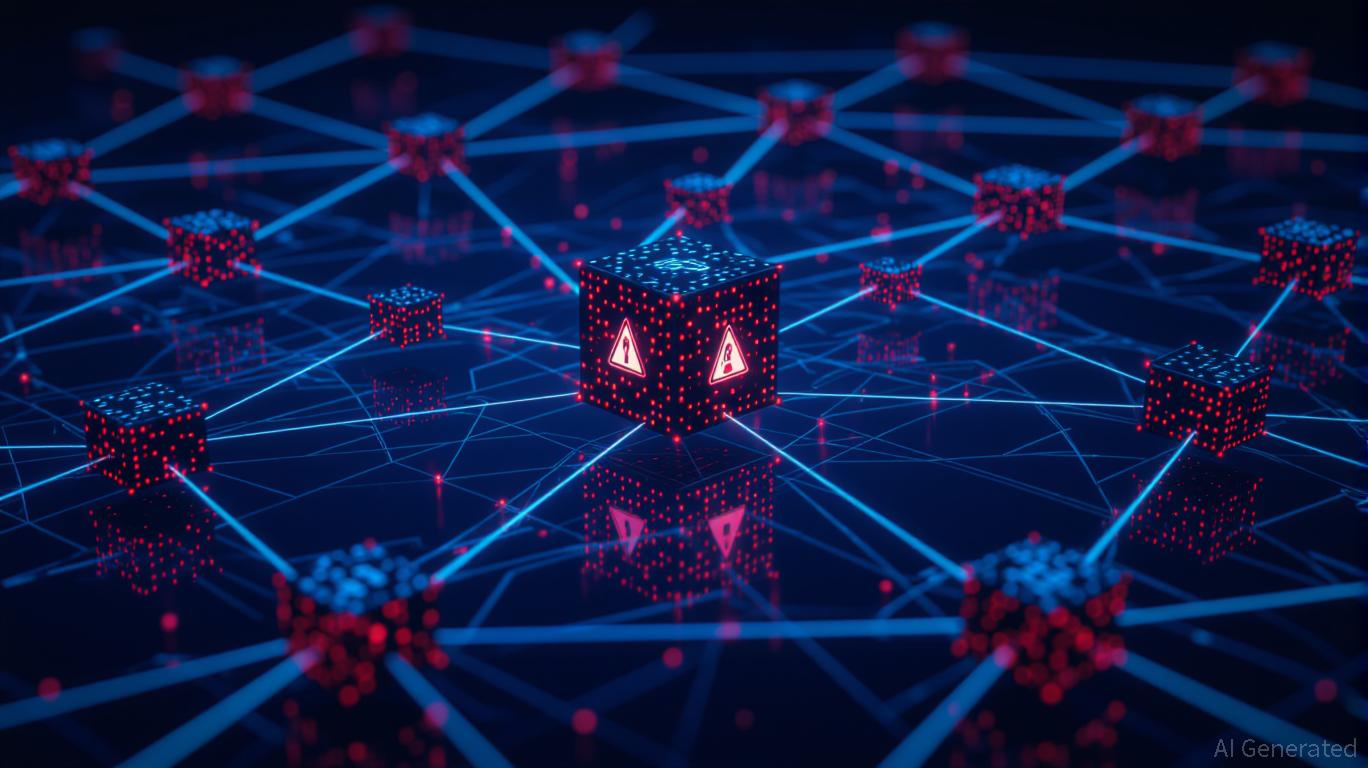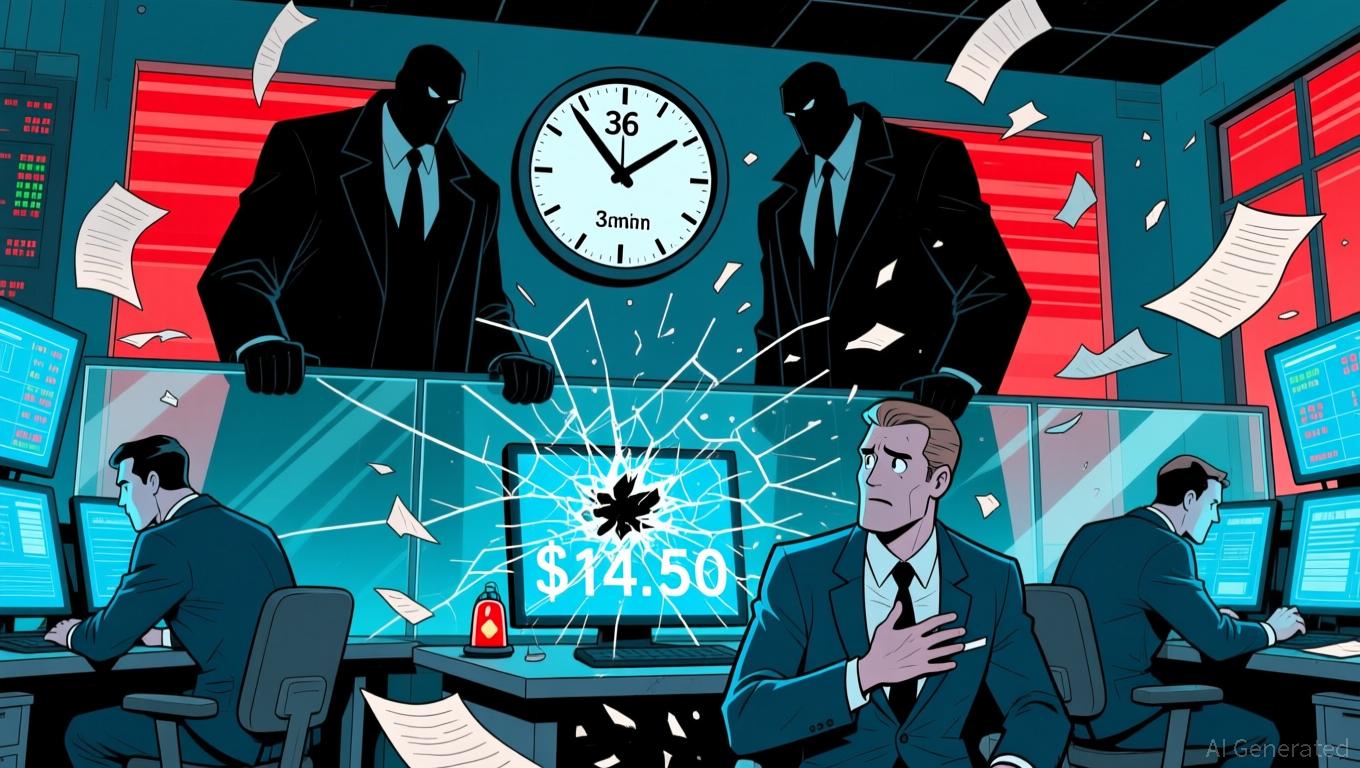The ChainOpera AI Token Crash: An Urgent Warning for Cryptocurrency Projects Powered by AI
- ChainOpera AI's COAI token collapsed 96% in late 2025, exposing systemic risks in AI-driven DeFi ecosystems. - Centralized governance (10 wallets controlled 87.9% supply) and misaligned incentives exacerbated panic selling during crises. - Technical flaws included untested AI models with 270% increased vulnerabilities and inadequate smart contract security audits. - Regulatory shifts like the GENIUS Act compounded liquidity challenges, highlighting the need for compliance-ready AI crypto projects. - Inve
Governance Failures: Centralization and Incentive Misalignment
Centralization within the governance system was a core issue behind COAI’s downfall. BeInCrypto’s investigation revealed that
The governance approach also failed to effectively prevent conflicts of interest. For example, while staking tokens was meant to democratize voting, the reality was that a handful of wallets could still dictate outcomes. This misalignment of incentives became even more problematic when algorithmic stablecoins like

Technical Vulnerabilities: AI Models and Smart Contract Risks
Technical weaknesses further undermined ChainOpera AI’s already fragile governance. Despite assurances of secure smart contracts, the platform was plagued by subpar application security and insufficient infrastructure protections, as detailed in a Kryll blog post
During this time, autonomous AI systems also saw a 67% rise in misconfigurations and logical mistakes,
Regulatory Pressures: Compliance Costs and Uncertainty
Regulatory changes added further complications for ChainOpera AI.
Lessons for Investors: Prioritizing Resilience Over Innovation
The COAI incident imparts three major takeaways for those investing in AI-powered crypto ventures:
1. Insist on Decentralized Governance: Projects where a small number of wallets control most tokens are inherently risky. Investors should look for protocols with wide, fair token distribution and clear, open DAO structures.
2. Examine Technical Audits Closely: Both AI models and smart contracts require thorough, independent security reviews. COAI’s lack of such protections left it open to systemic breakdowns.
3. Evaluate Regulatory Preparedness: Regulatory changes can quickly destabilize projects. Investors should assess how well a project adapts to shifting compliance demands and test its ability to withstand regulatory shocks.
Conclusion
The downfall of the ChainOpera AI token stands as a warning for the DeFi community. While AI has the potential to revolutionize blockchain, its adoption must be paired with strong governance, transparent technical standards, and proactive regulatory planning. For investors, the focus should move from pursuing novelty to ensuring that projects are built to endure systemic disruptions. As the crypto landscape evolves, those who learn from these lessons will be better equipped to manage the risks associated with AI-driven finance.
Disclaimer: The content of this article solely reflects the author's opinion and does not represent the platform in any capacity. This article is not intended to serve as a reference for making investment decisions.
You may also like
Bitcoin News Today: Bitcoin ETFs See $1.1B Outflow, While New Investments Flow Into XRP and Solana Funds
- U.S. Bitcoin ETFs lost $1.11B in three weeks, with BlackRock's IBIT and Grayscale's BTC leading outflows amid Bitcoin's six-month low at $95,200. - Analysts link redemptions to macroeconomic uncertainty and profit-taking after October's $126,000 rally, while Harvard tripled its IBIT holdings to $442.8M. - XRP and Solana ETFs attracted $255M in new capital, highlighting crypto diversification as Ethereum ETFs also faced $259M in single-day outflows. - Market debates Bitcoin's $94,000 support level amid th

Chainlink's Value Plummets Even as Ecosystem Surges by $26 Trillion
- Chainlink (LINK) plummeted to a 2.5-month low below $14.50, breaking critical support with 118% 24-hour volume spikes signaling institutional selling pressure. - A 360,000-token liquidation cascade and 27% unrealized loss in Chainlink Reserve holdings highlight market fragility despite $26T+ oracle-driven transaction value. - Institutional adoption via Stellar partnerships and tokenized bonds offsets short-term bearishness, yet RSI at 41.72 and 58.79% Bitcoin dominance signal ongoing altcoin weakness. -

Meme Coin Frenzy Sparked by Whale’s $19 Million Wager and Trump’s Support for Crypto
- A crypto whale injected $19.86 million into 22 meme coins in one hour, reflecting heightened speculative activity amid Trump-era crypto-friendly policies. - Trump-linked Bitcoin miner Hut 8 Corp reported 460% revenue growth, leveraging low-cost operations and 4,004 bitcoins ($400M value) to capitalize on market trends. - Canary Capital's MOG ETF filing triggered a 17% market cap surge for the meme token, highlighting institutional interest in community-driven crypto assets. - Analysts warn of regulatory

India’s Blockchain Strategy: National Tokenisation to Upgrade Financial Infrastructure
- India's economic advisor meets Polygon and Anq Finance to discuss tokenisation frameworks and sovereign digital assets for financial modernisation. - Proposed Asset Reserve Certificate (ARC) model uses government securities as collateral, aiming to create secure, sovereign-backed digital settlement units. - Discussions highlight tokenisation benefits like faster settlements and reduced risks, while stressing regulatory alignment with existing financial infrastructure. - Collaboration positions Polygon as
